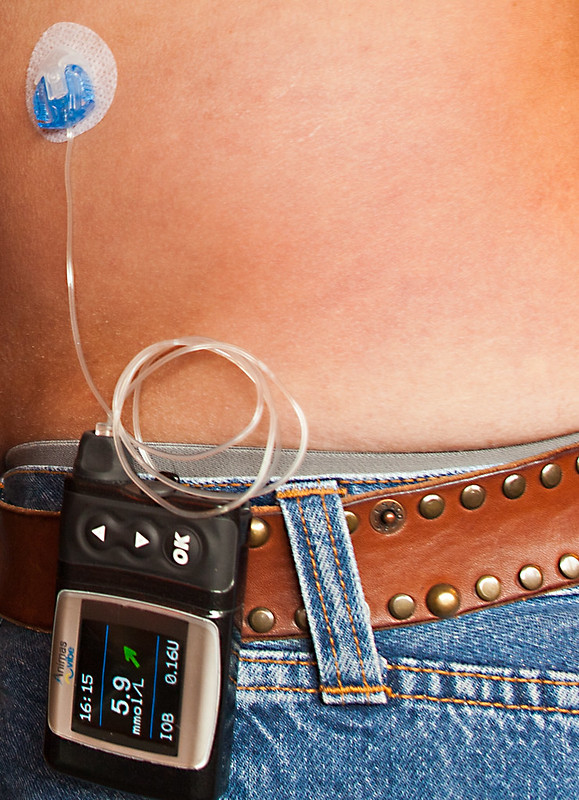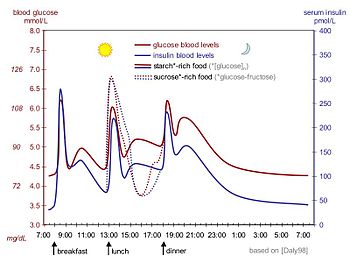 |
| Photo by aldenchadwick |
WHY AN INSULIN PUMP IS BETTER
In a healthy person, the pancreas produces insulin constantly at low levels, keeping blood glucose levels stable. When a meal is eaten, the pancreas will send larger amounts of insulin into the bloodstream to handle the food. Using a standard injection regime, slow and fast acting insulin is used to try and mimic the pancreas. An insulin pump much more closely copies the pancreas. The pump delivers a low level of background insulin (called basal) and at meal times can deliver a "bolus" dose at the touch of a button, to cover the food.
Just like a real pancreas, if you are ill, or exercising, the basal insulin rate can be reduced. If you skip a meal, the bolus is not delivered. In this way, the pump fits into your lifestyle, rather than planning your life around your injection schedule!
CHOOSING AN INSULIN PUMP
Most insulin pumps on the market today have all the basic features. Choosing one is much like choosing a Cellphone, it is a mixture of personal taste and what you plan on using it for. If you are a watersports fan, waterproof ones are available!
If you love analyzing data to improve your control, you can get one with PC download capability and analysis software. If you are new to the world of Insulin Pumps, here are some key points to think about:
Choose a pump that allows you to set up different basal levels. For instance at night time, if you are sick or exercising. This is an important feature to help you live a full life.
Pumps that use a standard "Luer Lock" infusion sets are better. This means cheaper consumables.
Alerts to remind you to check your blood glucose level make life easier.
Check what batteries it takes, standard AA or AAAs are cheaper and easier to buy.
More advanced pumps include a carbohydrate calculator to help you figure out what your meal Bolus dose should be.
Coming to the market are integrated Insulin Pump/Glucose meters. The meters readings are automatically transferred to the pump which can use them to recommend an insulin dose.
Other features to look for include, being waterproof, having a carbohydrate food database and alerts to warn you if you have missed a meal, or the infusion set needs changing. In short, Insulin pump manufacturers are making their products even easier to use and automating more and more features. Life is getting better for diabetics!
FREQUENTLY ASKED QUESTIONS
Q What if I don't get on with the pump, can I switch back to injections?
A Yes. It is not a one-way ticket, but most people do notice an improvement in their blood glucose control and find their lives improved.
Q I have a really hectic lifestyle, is a pump for me?
A Yes. In fact, people who are extremely busy often see the biggest improvement. If you struggle to remember to test and inject at the right time - perhaps meal times vary from day to day, then a pump could really help you.
Q I am considering a pump but may get pregnant, is that ok?
A Yes. As pumps usually improve your blood glucose control, using a pump through pregnancy and beyond is generally a good thing. Having as close to normal blood glucose levels reduces the chances of complications during pregnancy.
Q What are the costs?
A The initial outlay is in the order of a few thousand dollars, but prices are coming down all the time. Infusion sets need changing regularly too. The latest prices can be found from various diabetes suppliers on the web.

